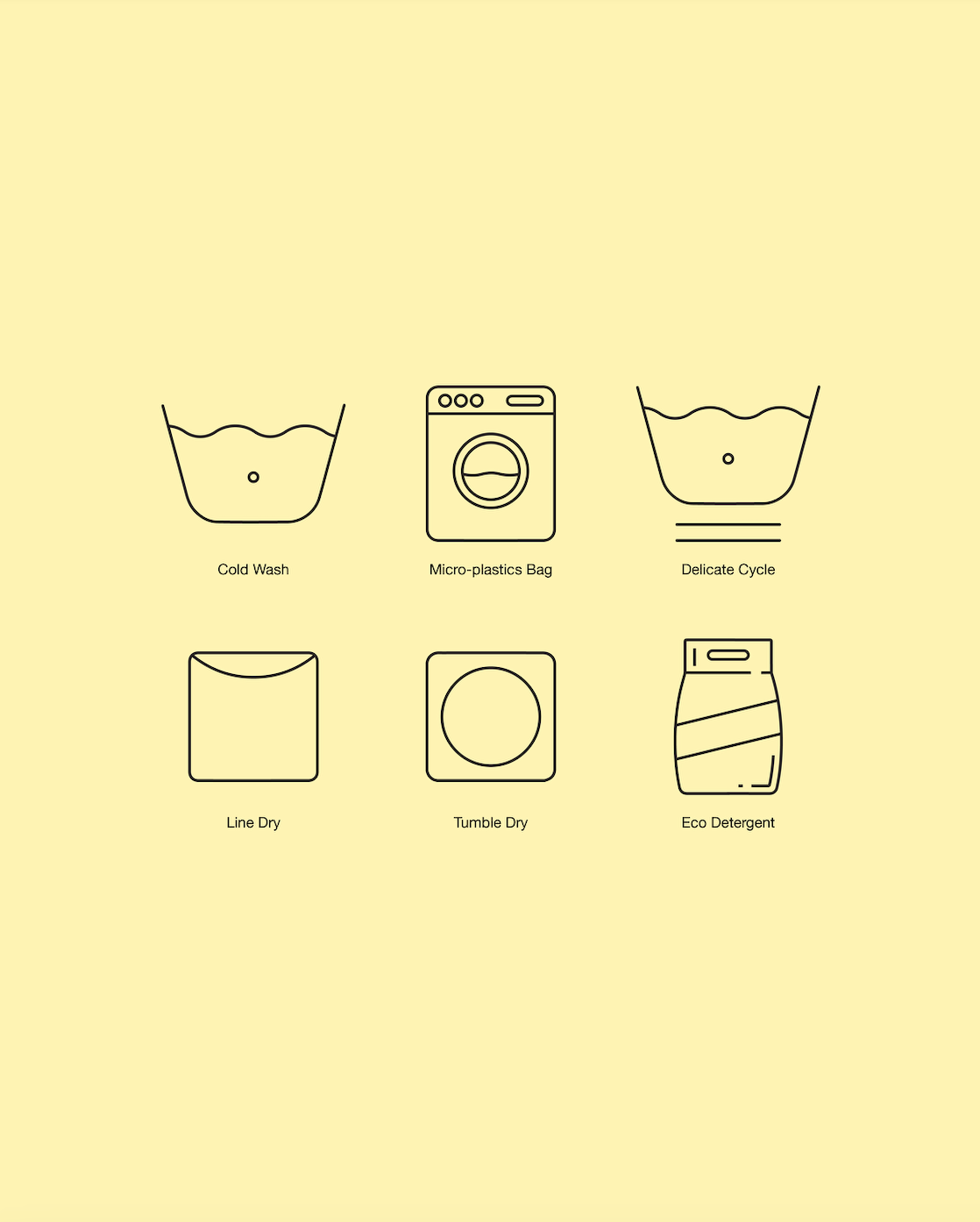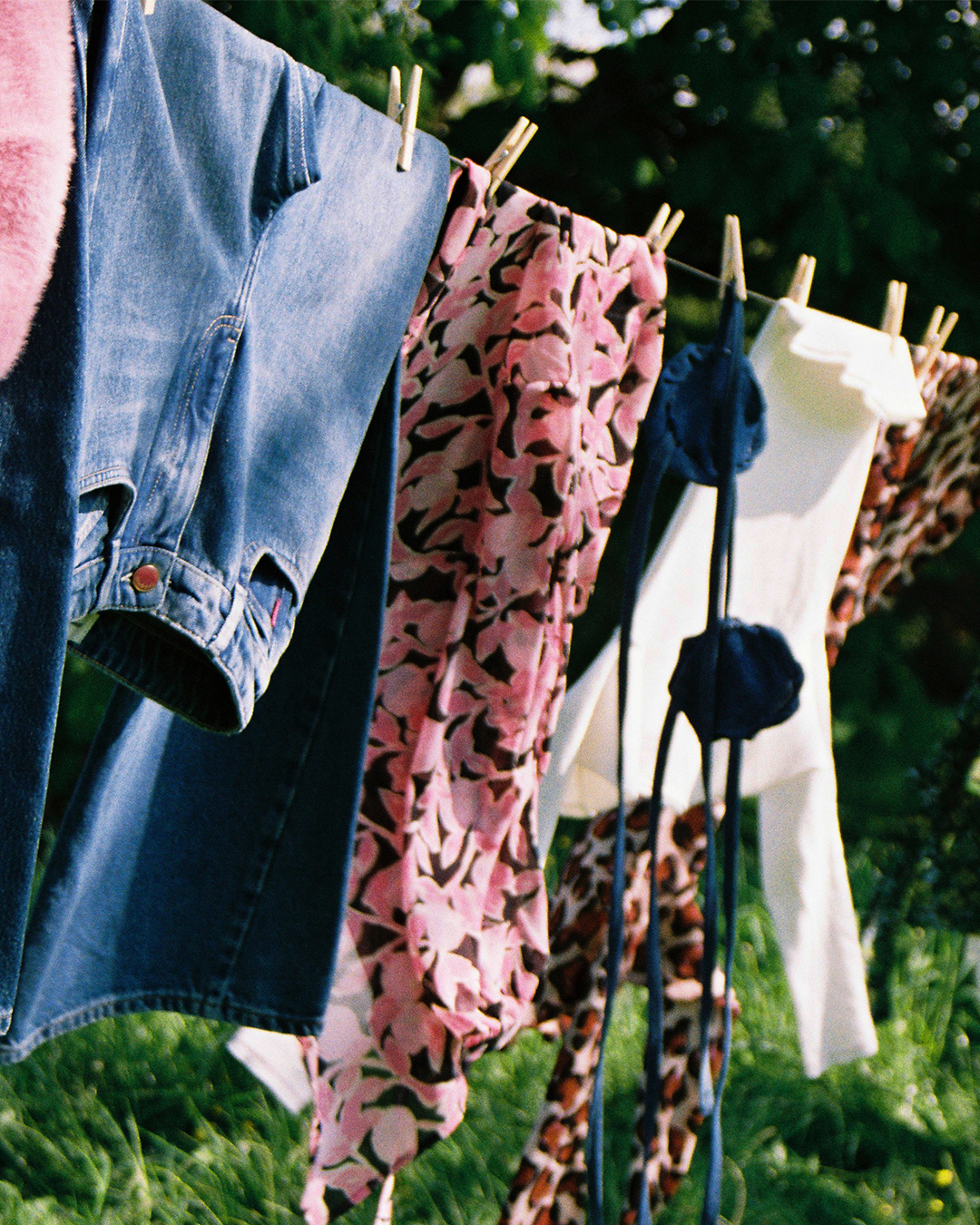
Care guide
Always check the care labels on your garments for specific washing instructions. Different fabrics and designs may require unique care. Click here for our responsible material guide.
WASHING
Wash cold: Whenever possible, wash your clothes in cold water to reduce energy consumption and preserve colour vibrancy. The temperature advice is the maximum temperature, you can always go lower in temperature.
Use Micro-plastics Bag: Did you know when washing synthetic textiles microplastics break off and enter in the environment. Using a filter bag, such as the GUPPYFRIEND Wash Bag, that will not only protect your clothes but also capture the flow of microplastic fibres into your drain. Don’t know where to find one? We’ve got you covered, just click here!
Use Delicate Cycle: Use a gentle or delicate cycle on your washing machine to prevent unnecessary wear and tear.
DETERGENT
Use Eco-Friendly Detergent: Use a mild, eco-friendly detergent to minimize harm to the environment and your clothing.
Avoid Overuse: Use the recommended amount of detergent to reduce chemical residue on your clothes and save money.
Wash less: Instead of washing the entire garment, try spot cleaning stains or soiled areas with a gentle stain remover. This can extend the life of your clothing and save water.
DRYING
Line Dry: Whenever possible, air-dry your clothes on a line or a drying rack to reduce energy consumption and prevent shrinkage and color fading.
Tumble Dry with Care: If you use a dryer, use a low-heat setting and remove items promptly to prevent over-drying.
IRONING & STEAMING
Some garments can do without ironing if hung properly. In case you need to iron or let out some extra steam for your clothes, make sure to do this at a lower temperature to reduce energy usage and prevent damage to fabrics.

STORAGE
Store your Fabienne Chapot items in a cool, dry place away from direct sunlight to prevent fading and damage.
Use wooden or padded hangers to maintain the shape of your clothing, and avoid wire hangers that can cause stretching.
MEND & REPAIR
Instead of discarding damaged or torn items, consider repairing them or taking them to a tailor. This extends the life of your clothes and reduces waste.
RESPONSIBLE DRY CLEANING
If dry cleaning is necessary, choose a cleaner that uses environmentally friendly practices and chemicals.
SECOND-HAND & RECYCLING
When you're ready to part with your Fabienne Chapot garments, you can also sell your pre-loved Fabienne Chapot items at our second-hand platform Relove.
EDUCATE YOURSELF
Stay informed about sustainable fashion practices, materials, and trends to make more conscious choices. Read more on our Responsibility page.

It's no secret that we make products. They’re not just any products — they’re colourful, detailed, high-quality and beautiful pieces full of craftsmanship. But they’re still products, and they hugely define our environmental impact. to reduce our footprint, we focus on the selection of more responsible materials.
RESPONSIBLE MATERIALS
Across our collections we’re increasing the use of more responsible materials like certified organic, recycled or lower-impact fabrics. In 2022, we sourced 24% of our materials from more responsible solutions, and by the end of 2023, we’ve set the target for this number to reach 40%. Our ultimate goal is to use 100% more responsible materials by 2026.
- Click here to read more about the responsible wash guide of the materials we use.
- Read more about our Fibre Index and what materials are categorized as “more responsible.”
FUTURE READING
Impact Report 2023
Impact Report 2022
Impact Report 2021
Our Code of Conduct
Our Factory Overview
Read more about our materials










